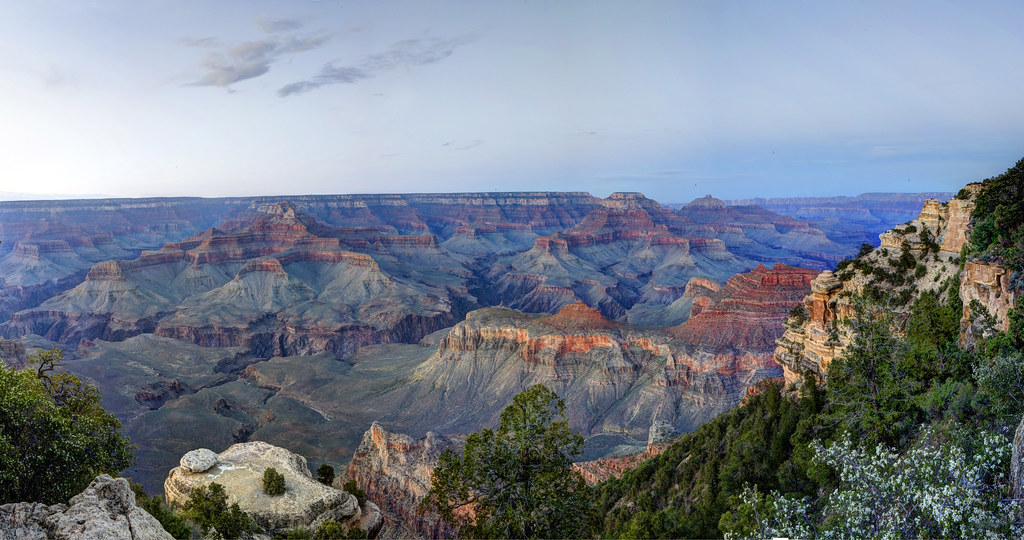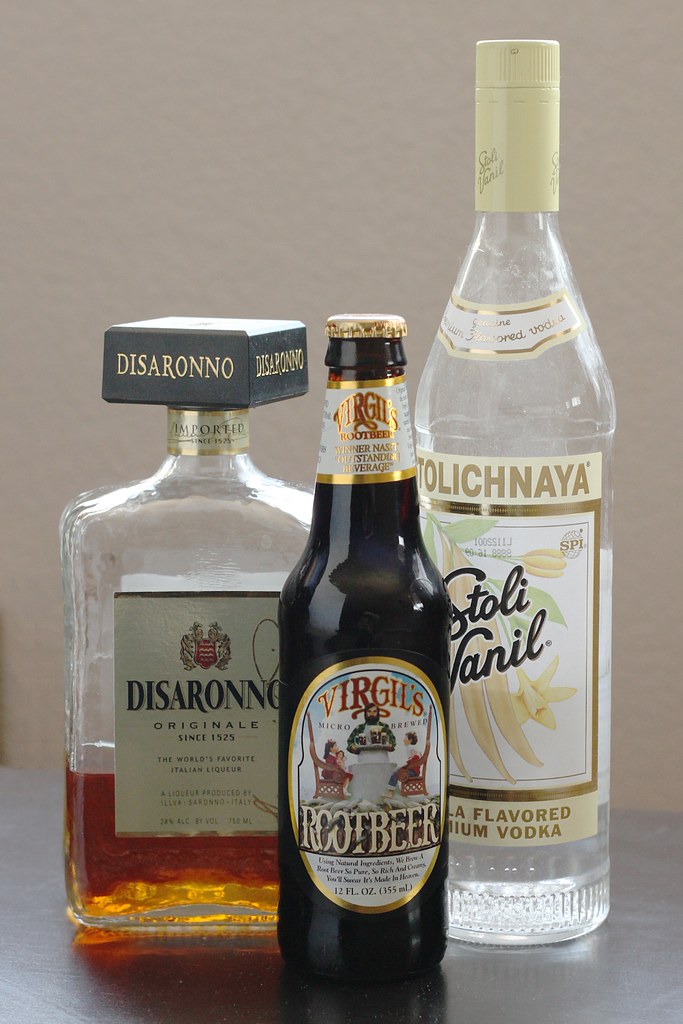
Have you ever pondered the ultimate secret to a long, vibrant life? It’s a question that has captivated humanity for centuries, often leading us down paths of complex diets, rigorous exercise regimens, and an endless pursuit of the next ‘silver bullet’ supplement. Yet, what if the answer wasn’t hidden in a lab or an expensive biohack, but rather in the simple, everyday practices of communities around the world where exceptional longevity is simply a way of life?
This is the compelling premise behind the ‘Blue Zones’ – a nonscientific term for geographic regions where inhabitants reportedly enjoy higher longevity, often living to 100 or beyond at remarkable rates. While the concept itself has faced some scrutiny, the profound lifestyle factors identified within these communities by National Geographic fellow Dan Buettner and other researchers offer a treasure trove of wisdom. These aren’t about chasing health; they’re about creating an environment where longevity naturally ensues, where healthy choices are the easiest and most integrated into daily living.
Indeed, some of the factors Buettner identified are strongly supported by solid science, providing credible and practical information that we can all incorporate into our lives. As we embark on a journey through these remarkable insights, prepare to feel empowered to make healthier choices, not through strict rules, but by understanding the subtle, yet powerful, shifts that can lead to a longer, happier, and more fulfilling existence. It’s about a holistic approach to living well, making health an unconscious outcome rather than a constant pursuit.

1. **Embrace Natural Movement: From La-Z-Boy to Garden**In our modern world, we often think of exercise as a separate, scheduled activity – a trip to the gym or a dedicated workout session. However, the centenarians in Blue Zones approach physical activity with a refreshing simplicity: they don’t ‘exercise’ in the conventional sense. Instead, movement is woven seamlessly into the fabric of their daily lives, a constant and gentle nudge towards health that keeps their metabolisms humming all day long. This contrasts sharply with the sedentary habits often seen elsewhere, where mechanical conveniences have engineered physical activity out of our lives.
Consider the community of shepherds in Sardinia, one of the original Blue Zones, who are known to walk more than 5 miles (8 kilometers) a day as part of their daily routine. This isn’t a planned workout; it’s simply how they get to work and tend to their responsibilities. Similarly, Buettner suggests planting a garden, noting that it “nudges you to weed and water and harvest almost every day,” keeping you moving without conscious effort. This constant, low-intensity activity accumulates, promoting overall fitness and well-being.
Beyond just walking or gardening, the Blue Zone inhabitants also embrace more natural ways of sitting and rising. Emulating the Okinawans, for example, means spending more time on the floor, either sitting or squatting. Buettner recalls sitting for two days with a 104-year-old woman who got up and down off the floor 30 times – a natural form of 30 squats that helps maintain strength in the legs and core. This simple practice contributes to better balance and flexibility, potentially preventing falls, which are a leading cause of injury and death in older adults in the U.S. The evidence is clear: highly active people are less likely to die prematurely, a fact largely supported by a 2021 systematic review and meta-analysis published in the journal Preventive Medicine.

2. **Discover Your ‘Why’: Cultivating a Deep Sense of Purpose**Imagine waking up each morning with a clear, compelling reason to embrace the day. This profound sense of purpose is a cornerstone of longevity in the Blue Zones, known as ‘ikigai’ in Okinawa and ‘plan de vida’ in Nicoya. Both terms convey the powerful idea of ‘why I wake up in the morning’ – a deeply personal and motivating force that contributes significantly to life satisfaction, and ultimately, to a longer, happier existence. It’s not about grand achievements, but about finding meaning in everyday contributions and connections.
Having a high sense of purpose has substantial scientific backing for extending a person’s life span. A 2016 meta-analysis published in the journal Psychosomatic Medicine found that a strong sense of purpose was related to a reduced risk of dying from any cause, as well as a reduced risk of cardiovascular events. This highlights how our mental and emotional states are inextricably linked to our physical health. It’s an empowering reminder that cultivating a meaningful life is not just good for the soul, but also for the body.
In contrast, the detrimental effects of stress are also well-documented. A 2022 meta-analysis published in The Lancet revealed that stress and stress-related disorders vastly increase the risk of all-cause mortality. This underscores the importance of a positive mindset and a clear direction in life, as a buffer against daily stressors. The Blue Zone communities teach us that nurturing our inner drive and understanding our contribution to the world around us is a powerful, proactive step toward holistic wellness and sustained vitality. It’s about finding that inner spark that fuels your days and keeps you engaged with life.

3. **Prioritize Rest and Recharge: The Power of Sleep and Naps**In our fast-paced society, sleep is often viewed as a luxury, or worse, a time-waster. Yet, in Blue Zones, prioritizing rest and sleep is a fundamental pillar of longevity. This isn’t just about getting enough hours at night; it’s about integrating periods of genuine rest into the rhythm of the day, allowing both body and mind to recharge. The inhabitants of these long-lived regions understand that true productivity and well-being stem from a foundation of adequate rest.
Take the Ikarians, for instance, a small Greek island community known for taking restorative midafternoon naps. This siesta tradition, while pushed to near extinction in many modern cultures, has been scientifically shown to be incredibly beneficial. Research suggests that a 20-minute nap can effectively compensate for an hour of lost sleep, helping individuals stay sharp and focused later in the day. It’s a simple, actionable swap that can dramatically improve mental clarity and reduce stress, contributing to overall health and resilience.
The Loma Linda community, largely composed of Seventh-day Adventists, offers another powerful example by recognizing the Sabbath. This designated day of rest and worship once a week provides a structured pause from daily routines, fostering mental and spiritual rejuvenation. While the notion that daytime napping *promotes* longevity specifically may not be entirely correct (a 2015 meta-analysis in the journal Sleep linked naps over an hour to higher mortality, and excessive sleepiness can signal underlying conditions), the emphasis on adequate and restorative sleep, and taking time for rest, is unequivocally vital for health. Prioritizing consistent, quality sleep and strategic periods of rest allows our bodies to repair and our minds to consolidate, laying a crucial foundation for sustained well-being.

4. **The ‘80% Rule’: Mindful Eating for Optimal Health**One of the most elegant and effective dietary strategies observed in the Blue Zones is the ‘80% rule,’ a profound practice that prevents overeating and promotes a healthier relationship with food. This isn’t about calorie counting or strict deprivation; it’s about mindful awareness and listening to your body’s signals. The name of this rule originates from an old Okinawan mantra, ‘Hara Hachi Bu,’ which gently reminds people to stop eating when their stomachs are 80% full, leaving a little room for digestion and avoiding the sluggishness of an overfilled stomach.
This simple principle aligns perfectly with scientific understanding of longevity. Research supports the claim that calorie restriction may promote longevity, as detailed in a 2020 review published in the journal Ageing Research Reviews. The ‘80% rule’ specifically, by encouraging moderate intake, can improve risk factors involved in the development of chronic diseases such as type 2 diabetes, cardiovascular diseases, cancer, and neurological disorders. It’s a powerful tool for preventing the accumulation of excess body fat and reducing the inflammatory burden on the body.
To adopt this practical strategy, consider turning off distractions like the TV or your devices during meals. Save the dining table as a place to slow down, savor your food, and truly tune into your body’s satiety cues. Mindful eating has been consistently shown to help people moderate their intake, fostering a more intuitive and beneficial approach to nutrition. This mindful pause, before reaching full capacity, empowers us to better manage our energy levels, support digestive health, and contribute significantly to long-term wellness without feeling deprived.

5. **Nourish with Nature: Embracing a Plant-Based Diet**The cornerstone of Blue Zone diets, and perhaps one of the most widely recognized ‘secrets’ to their longevity, is an overwhelming reliance on plant-based foods. This isn’t necessarily about strict vegetarianism or veganism, but rather a ‘plant-forward’ approach where fruits, vegetables, whole grains, and legumes form the vast majority of their dietary intake. It’s a colorful, nutrient-dense way of eating that provides essential vitamins, minerals, and fiber, fueling the body with pure, unadulterated goodness directly from the earth.
As Annette Creedon, a registered nutritionist and nutrition manager at the British Nutrition Foundation, explains, “It is estimated that one in five deaths globally is linked to having a poor diet, and an unhealthy dietary pattern is associated with several chronic conditions.” In stark contrast, Blue Zones are remarkably consistent in their dietary patterns: a high intake of plant foods, including fruits, vegetables, and whole grains; plant-based proteins such as legumes, nuts, and seeds; and some seafood, poultry, lean meat, low-fat dairy products, and unsaturated oils like olive oil. These are the ‘cheapest peasant foods,’ as Buettner notes, yet they are incredibly rich in life-sustaining nutrients.
Studies have consistently found that healthy, plant-rich dietary patterns are associated with significant reductions in the risk of heart disease, type 2 diabetes, and some cancers, as well as a decrease in all-cause mortality. For example, a daily cup of beans is associated with an extra four years of life expectancy, according to Buettner’s analysis. Okinawans thrive on sweet potatoes, rich in vitamin A, while the Nicoya Peninsula residents favor carotenoid-rich squash. The typical diet in the U.S. includes about 220 pounds of meat per year, per person, whereas in Blue Zones, it’s about 20 pounds a year – roughly one-tenth of the amount. This powerful shift towards natural, unprocessed foods, often cooked at home and flavored with abundant herbs like rosemary, cilantro, fennel, oregano, and sage, is a highly actionable and delicious way to cultivate a longer, healthier life.
As we continue our exploration into the ‘Blue Zone’ philosophy, it becomes clear that true longevity is not solely about individual habits, but also deeply rooted in the communal tapestry of life. Beyond personal choices, the environments we inhabit and the connections we forge play an equally crucial role in shaping our health trajectories. The next four insights from these remarkable communities reveal how social structures, familial bonds, and even community-level nudges can seamlessly integrate healthy living, making longevity an unconscious outcome rather than a relentless pursuit. These aren’t just about making good decisions; they’re about being enveloped in a culture where health simply *happens*, supported by the collective wisdom of generations.

6. **Rethinking Alcohol: A Nuanced Look at Moderate Consumption**For years, many have pointed to moderate alcohol consumption, particularly of wine, as a potential component of the Blue Zone secret to a longer life. Indeed, researcher Dan Buettner initially observed that some centenarians in these regions included moderate alcohol intake as part of their lifestyle, often as a deeply ingrained cultural practice. This idea often sparks hope, offering a seemingly enjoyable path to health, with images of people enjoying a glass with friends or family.
However, the scientific landscape surrounding alcohol and longevity is far more complex and, in some cases, directly challenges these initial observations. Current research indicates that moderate alcohol consumption may not, in fact, contribute to people living longer. A comprehensive 2016 systematic review and meta-analysis published in the *Journal of Studies on Alcohol and Drugs* found that moderate drinking does not reduce mortality, casting doubt on a direct link to extended lifespan.
The perceived health benefits among low-volume drinkers, it suggests, might be misleading. These individuals may appear healthier simply because those who abstain from alcohol often do so due to existing health conditions, rather than abstinence itself being a detriment. This distinction is vital for understanding the true impact of alcohol on health, emphasizing the need for careful interpretation of observational data.
Furthermore, the popular notion that wine, with its much-touted polyphenols, offers unique longevity benefits compared to other types of alcohol also lacks solid scientific evidence. A 2011 study in the *Journal of Studies on Alcohol and Drugs* found no significant difference in mortality rates between wine and other types of alcohol, and a 2020 review in the journal *Molecules* concluded that there is still a lack of solid evidence that wine polyphenols directly contribute to a longer life span. Therefore, while cultural practices may include alcohol, its role in longevity appears to be minimal at best, and certainly not a health-promoting factor.
While the cultural enjoyment of a glass of wine might be part of the social fabric in some Blue Zones, the evidence is clear: pursuing alcohol consumption specifically for health benefits is not a scientifically supported path to a longer life. It’s crucial to make choices based on robust scientific understanding, prioritizing overall well-being rather than clinging to beliefs that lack definitive backing. For true holistic wellness, focusing on the unequivocally beneficial factors remains the most reliable strategy.

7. **Cultivate Strong Social Connections: The Power of Community**One of the most profound and consistently backed pillars of Blue Zone longevity is the strength of social connections and close community ties. It’s not just about having friends; it’s about being deeply integrated into a supportive network that provides a sense of belonging, reduces stress, and even promotes healthier behaviors through powerful, often unconscious, influence. This collective sense of well-being becomes a formidable asset for long-term health.
Research overwhelmingly supports this idea, with a 2010 meta-analysis published in the journal *PLOS Medicine* revealing that individuals with stronger social relationships are an astonishing 50% more likely to live longer than those who lack them. This powerful association holds true regardless of age, sex, health status, or cause of death, emphasizing the fundamental human need for connection as a vital component of physical health and mental resilience. The strongest correlation was found for social integration, underscoring the importance of active and meaningful engagement within one’s community, rather than just superficial acquaintances.
A standout example of this philosophy in action is the Okinawan concept of “moais” – small, lifelong social groups that function as powerful support systems. These aren’t just casual friendships; they are secure networks that provide emotional, financial, and practical support to their members throughout life’s journey. This integral part of Okinawan life ensures that no one feels isolated or unsupported, which significantly contributes to mental health and stress reduction, fostering a pervasive sense of belonging and purpose that underpins a long and healthy life. These groups serve as a buffer against life’s inevitable challenges, providing collective strength.
Moreover, our social circles have a tangible, often overlooked, impact on our daily habits. Dan Buettner points out a fascinating, yet sobering, statistic: if your three best friends are obese and unhealthy, there’s about a 150% greater chance that you’ll be overweight yourself. This highlights how powerfully our immediate social environment can “nudge” us towards or away from healthy choices, often unconsciously. Actively curating your social circle to include people who share healthy interests and values can therefore be a powerful longevity hack, offering both encouragement and accountability that makes healthy living feel more natural and sustainable.
For those of us outside traditional Blue Zone communities, the message is clear and actionable: actively seek out and foster strong social ties. Whether it’s joining a gardening club, participating in civic projects, finding a hiking group, or simply dedicating regular time to friends and family, making social connection a priority can profoundly impact your longevity and overall well-being. The Seventh-day Adventists in Loma Linda, for instance, cultivate community through potlucks and nature walks, creating shared experiences that strengthen bonds and promote a healthier, more engaged lifestyle. It’s about building a supportive ecosystem where healthy living is not just encouraged, but naturally integrated into daily life.
Read more about: Phil Mickelson’s Elite Garage: Unveiling the Champion Golfer’s Luxury Fleet and Lavish Lifestyle

8. **Prioritize Family Bonds: Loved Ones First**At the very heart of the Blue Zone ethos lies an unwavering commitment to family. Strong familial ties are not merely cultural traditions; they are a cornerstone of longevity, providing a profound sense of security, care, and intergenerational support that profoundly impacts health outcomes. In these communities, children often care for aging parents and grandparents, cementing bonds and ensuring that elders remain integrated and valued members of society, benefiting from their wisdom and experience.
Consider the Seventh-day Adventists in Loma Linda, California, one of the original Blue Zones. Within their tight-knit communities, it is common for children to take care of their aging parents, fostering a robust support system that stands in stark contrast to more isolated models of elder care prevalent in many modern societies. Similarly, in Costa Rica’s Nicoya Peninsula, the region’s historical isolation has fostered an environment where people instinctively rely on each other, particularly family members, for daily needs and support, creating a web of mutual assistance.
Dan Buettner recounts meeting Panchita, a centenarian from Nicoya, whose 85-year-old son and his children would regularly bike to her house to help feed chickens, receiving home-cooked beans and rice in return. This “beautiful symbiosis” exemplifies how practical support and mutual care are interwoven into the daily fabric of family life, ensuring that no one is left to struggle alone. Such arrangements prevent loneliness, provide purpose for both the caregivers and the cared-for, and distribute the burden of daily life, fostering a healthier, more harmonious environment for all generations involved.
The commitment to family extends beyond direct care, influencing public policy in remarkable ways. Singapore, identified by Buettner as a “manufactured Blue Zone,” offers tax breaks for residents who keep their aging parents close – either living with them or within about 500 yards. This innovative governmental approach actively encourages multi-generational living and ensures that older people are cared for within a family unit, reducing reliance on external care facilities which may not always offer the same level of emotional and social support. Embracing and strengthening family connections, therefore, offers both emotional richness and a tangible boost to collective well-being and longevity, reinforcing the idea that a life well-lived is often a life shared.

9. **Live in Health-Promoting Environments: Social and Environmental Nudges**Perhaps one of the most transformative insights from the Blue Zones is the understanding that longevity isn’t solely a result of conscious, disciplined health pursuits, but often a natural consequence of living in an environment where healthy choices are simply the easiest and most integrated into daily life. As Dan Buettner aptly puts it, people in Blue Zones are “simply a product of their environment,” where healthy behaviors are gently nudged rather than strenuously willed, becoming the default path.
This environmental influence manifests strongly through social networks. Blue Zone centenarians are typically embedded in social circles that inherently promote healthy behaviors. If your closest friends prioritize walking, eat plant-forward meals, and manage stress effectively, you are far more likely to adopt similar habits without even realizing it, as these practices become normalized and expected. This contrasts sharply with environments where unhealthy options are abundant and social norms might lean towards less beneficial choices, making the pursuit of health feel like an arduous, uphill battle. Buettner’s observation about the disparity in life expectancy—where areas in Kentucky might have 20 years less life expectancy than Boulder, Colorado—underscores how much easier it is to be healthy when supported by your surroundings.
Singapore provides a powerful, modern example of a “manufactured Blue Zone” where deliberate environmental design has dramatically increased life expectancy. Over the past five decades, Singapore has achieved an almost 25-year increase in life expectancy by consciously prioritizing people’s health and well-being over solely business interests. This involved governmental policies that subsidize healthy food options while taxing junk food, incentivizing walking through urban planning and public transport infrastructure, and even offering tax breaks to encourage multi-generational family living. The result is a highly walkable, clean environment where healthier choices are not just possible, but often the default and most convenient option.
While the original Blue Zones are undeniably unique, facing threats from globalization and urbanization that push people towards more modern, often less healthy, lifestyles, their core principles offer a blueprint for adapting our own environments. Buettner insists that even in urban settings, we can implement Blue Zone strategies by creating walkable neighborhoods, fostering community gardens, and designing public spaces that encourage natural movement and social interaction. It’s about making health an unconscious outcome by shaping our surroundings to effortlessly guide us toward better choices, rather than relying solely on individual willpower.
The wisdom of the Blue Zones extends far beyond individual self-improvement; it calls for a fundamental shift in how we design our communities and cultivate our social fabric. By understanding and adapting these powerful environmental and social nudges, we can create spaces where healthy living isn’t a challenge, but an inherent part of daily existence, making longevity a collective achievement that benefits everyone.
The journey through the Blue Zones reveals a compelling truth: the secret to a longer, healthier life is not found in fads or quick fixes, but in a holistic integration of mindful habits and supportive communities. From moving naturally and eating mindfully to cultivating a deep sense of purpose and nurturing strong social and familial bonds, these practices are profoundly interconnected, each reinforcing the other to create a virtuous cycle of well-being. While the concept of Blue Zones may prompt scientific debate, the underlying wisdom—supported by a growing body of research—offers a powerful, actionable roadmap. It’s an empowering invitation to transform our lives, not through grueling effort, but by weaving these simple, time-tested principles into the vibrant tapestry of our daily existence, allowing longevity and well-being to naturally ensue as a cherished part of a fulfilling life.



